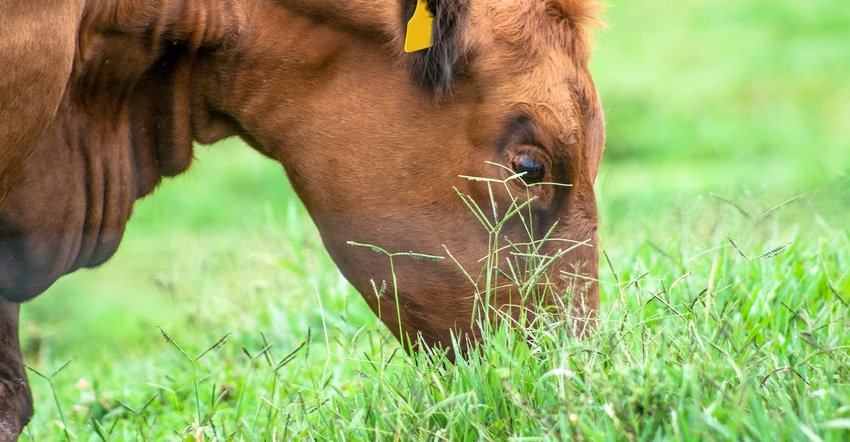Put orchardgrass and tall fescue in the ground before frost.
September 5, 2019

“Plant cool-season grasses in September,” says Craig Roberts, University of Missouri Extension forage agronomist. “The earlier the better.”
Early planting lets seedlings put down roots to start growth before frost. New plantings must store energy for spring growth.
In northern Missouri, that means putting seed in the ground the first week of September. Ozark plantings can wait until mid-September. A late frost would help all.
What to plant
Orchardgrass and tall fescue are favored in Missouri. Other options are timothy, bromegrass and perennial ryegrass. Fescue has staying power under Missouri grazing conditions.
Missouri isn’t easy on forages. Weather can be too cold, too hot and too dry. Over time, most grass needs reseeding, Roberts says. Fall seeding lets grasses get started for grazing next year. Then they must be used gently to start.
Missouri’s most used cool-season grass is K-31 tall fescue. Hardiness makes it popular. But K-31 brings many harmful side effects. Its hardiness comes from an endophyte fungus that protects the plant from pests — and grazing. That toxic fungus hurts livestock gains and reproduction.
“The absolute best cool-season grass is one of the novel-endophyte fescues,” Roberts says. In new grasses, plant breeders have replaced toxic endophyte with nontoxic novel endophytes.
Novel-endophyte fescues are hardier than endophyte-free fescue. Livestock thrive on them. Novel fescues need more care because cattle graze them into the ground if unmanaged.
All pastures benefit from management-intensive grazing taught in Missouri grazing schools. Attending a grazing school allows farmers to gain cost-share dollars from local soil and water conservation districts.
Information on grazing schools comes from local MU Extension centers or Natural Resources Conservation Service offices.
How to plant
Grass seeding is best done with no-till drill. This takes careful control for shallow seeding. “Plant no more than a quarter-inch deep,” Roberts says. “If planted too deep, seedlings may not emerge.”
A drill set incorrectly may not cut through thatch for seed to make good soil contact.
In a thinning pasture grown for many years, thatch may be a major concern. Some soil preparation may be needed. Concerns about drill settings remain on prepared ground.
Roberts says to calibrate the drill for 15 pounds of live seed per acre.
After starting to drill, stop and check results before going too far. Dig up seed to check depth. Make corrections as needed.
“With shallow planting, some seed will be on top of the ground," Roberts says. "That’s to be expected. Don’t wait until the whole field is planted to discover incorrect depth settings."
The Alliance for Grassland Renewal was formed in Missouri to promote novel-endophyte fescues. Now it holds pasture renovation schools across the Fescue Belt.
The group is made up of agronomists from universities, industry and government, as well as farmers. The website lists companies with approved seed varieties. Visit www.grasslandrenewal.org.
Source: University of Missouri Extension, which is solely responsible for the information provided and is wholly owned by the source. Informa Business Media and all its subsidiaries are not responsible for any of the content contained in this information asset.
You May Also Like



